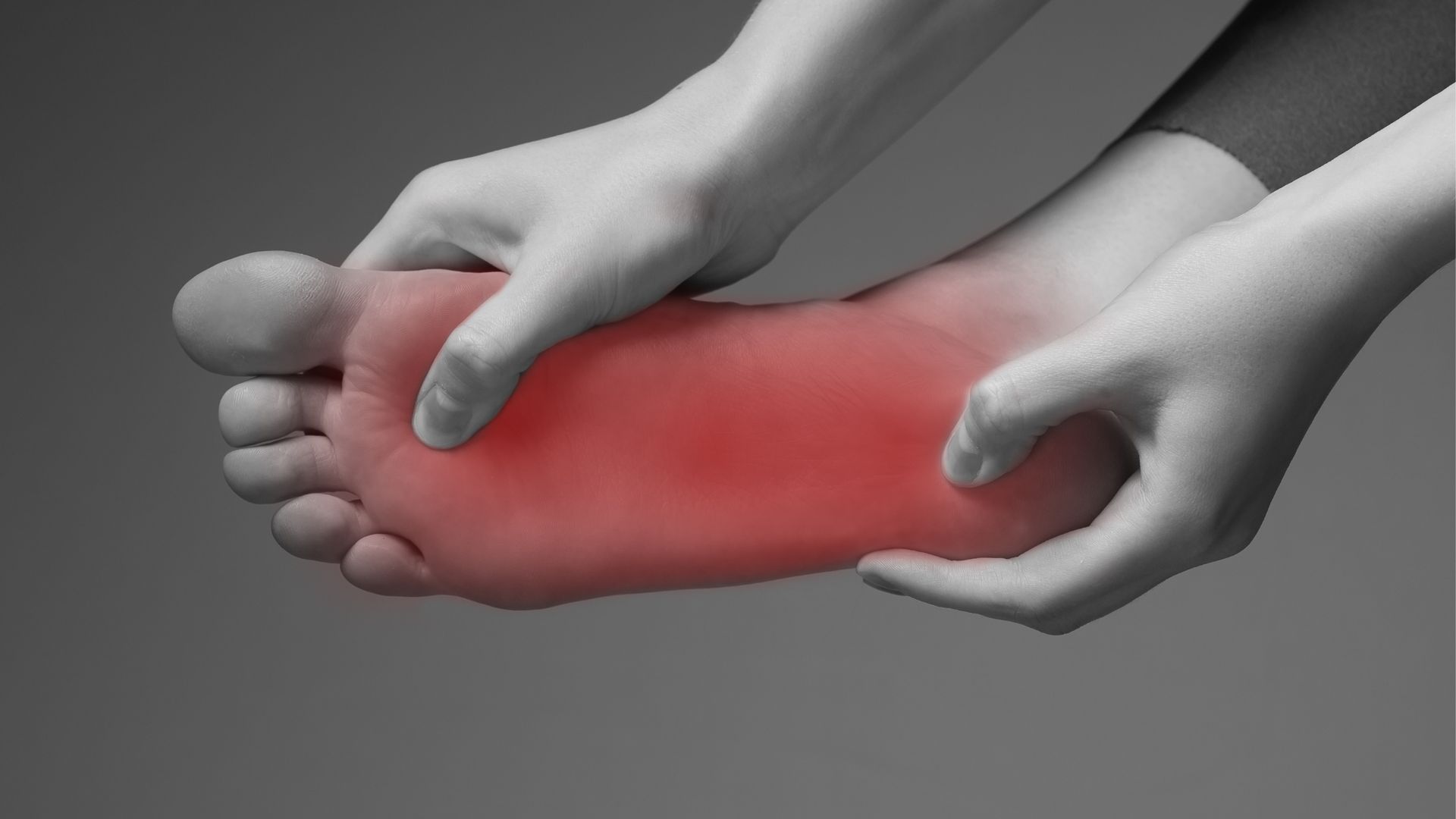What Is a Fallen Arch and How Is It Treated?

Flat feet, or pes planus, can be a painful condition found in children whose arches don't develop or in adults who have suffered from an injury. Fallen arches occur when the entire sole of the foot touches the floor when standing. Though some people may have the appearance of flat feet with no symptoms, others experience extreme discomfort in the heel and arch area.
What Is a Fallen Arch?
One of the most-worked tendons in the leg is the posterior tibial tendon. This crucial band of tissues attaches the calf muscle to the bones on the inside of the foot. When injured or worn, this arch-supporting tendon can slowly cause the arch to lower, causing the bottom of the foot to become flat.
What Causes Fallen Arches?
A compromised posterior tibial tendon is the most common cause of fallen arches. But there are many conditions that make developing flat feet more likely, including:
- Arthritis
- Neuromuscular diseases
- Traumatic injuries to the foot or ankle
- Obesity
- Diabetes
- Tight calf
Are Fallen Arches Hereditary?
Hereditary traits are one of many causes of fallen arches. Most children are born with flat feet and develop an arch by the age of six. However, about two out of ten children still have flat feet as adults for genetic reasons. And since there are inheritable variations in how arched your feet become, it is also easier for people with very slight arches to develop flat feet later in life according to a pattern that runs in families.
Do Arches Collapse with Age?
Aging can lead to fallen arches. This is mostly due to the common conditions that come with age such as arthritis, inflammation, the tightening of the calf, and natural wear and tear on the body’s joints, tendons, and ligaments.
Can Your Arches Fall Suddenly?
While arches often gradually fall over time due to some of the conditions mentioned above, arches don’t normally fall very suddenly unless there has been a traumatic injury to the foot.
Fallen arches can affect more than just a person's feet. Flat feet can result in:
- Back and leg pain
- Swollen feet
- Aches and pains in heels and arches
- Limited foot movement
- Difficulty standing on your toes
Can You Fix Fallen Arches?
Yes, fortunately there are ways to stretch and condition feet to prevent more pain and discomfort from falling arches. Toe raises, calf raises, arch lifts, and tennis or golf ball rolls are all ways to strengthen your arches and support ligaments. Furthermore, stretching of your Achilles tendon is of the utmost importance in treating a fallen arch. For demonstrations of these exercises and step-by-step instructions, check out this article from Healthline, Exercises for Flat Feet.
Special orthotic devices or shoe modifications can also help treat flat feet. In instances where pain or damage to the feet from fallen arches is severe, a doctor might recommend physical therapy or surgery.
Other Ways to Correct Fallen Arches
Beyond working arch-targeted exercises into your workout routine, you can actively engage your feet by focusing on your posture. Poor posture affects your upper and lower back, neck, shoulders, and – usually the most neglected – your feet. Work on improving your posture and being more aware of slouching spines and hunched shoulders.
Can You Regain the Arch in Your Foot?
Sometimes the aches and pains of fallen arches cannot be helped by exercises and stretching alone. When folks no longer want to live with the mobility issues of flat feet, they turn to surgery.
The flat foot reconstruction procedure uses titanium inserts to reconstruct the arch. This technique provides more predictable outcomes than alternative flat foot treatments and leads to a more comfortable and natural-feeling arch for the patient. This procedure has proven successful in patients with all stages of flatfoot deformities, resulting in improved mobility for years to come.
What Can a Podiatrist or Orthopaedic Foot and Ankle Specialist Do for Fallen Arches?
These individuals are trained medical specialists who focus specifically on ailments of the feet and lower legs. They can diagnose your condition, determine its cause, and recommend the best course of treatment, be it exercises, orthotic inserts, or surgery.
Dr. Adam Perler, D.P.M., Dr. John Constantino, D.P.M., Dr. Thomas Odmark, MD
Over the last 20 years, these specialists in foot and ankle care have performed hundreds of life-altering ankle replacements, ankle fusions, ankle deformity corrections, triple arthrodesis, subtalar fusions, and flatfoot reconstructions at Alexander Orthopaedic Associates. Our trusted podiatrists are board-certified in both Foot and Reconstructive Rearfoot and Ankle Surgery by the American Board of Foot and Ankle Surgery and Dr. Perler is a recipient of the Florida Podiatric Medical Association (FPMA) Podiatric Physician of the Year award. Dr. Odmark is board certified by the American Board of Orthopaedic Surgery and fellowship trained in foot and ankle surgery.
Get Relief for Your Fallen Arches at Alexander Orthopaedics
If you’re suffering from fallen arches or flat feet and would like to get back to a healthier you, schedule a consultation. Our team of expert physicians, physicians’ assistants, and physical therapists can recommend and implement a course of treatment that will help you feel your best.
